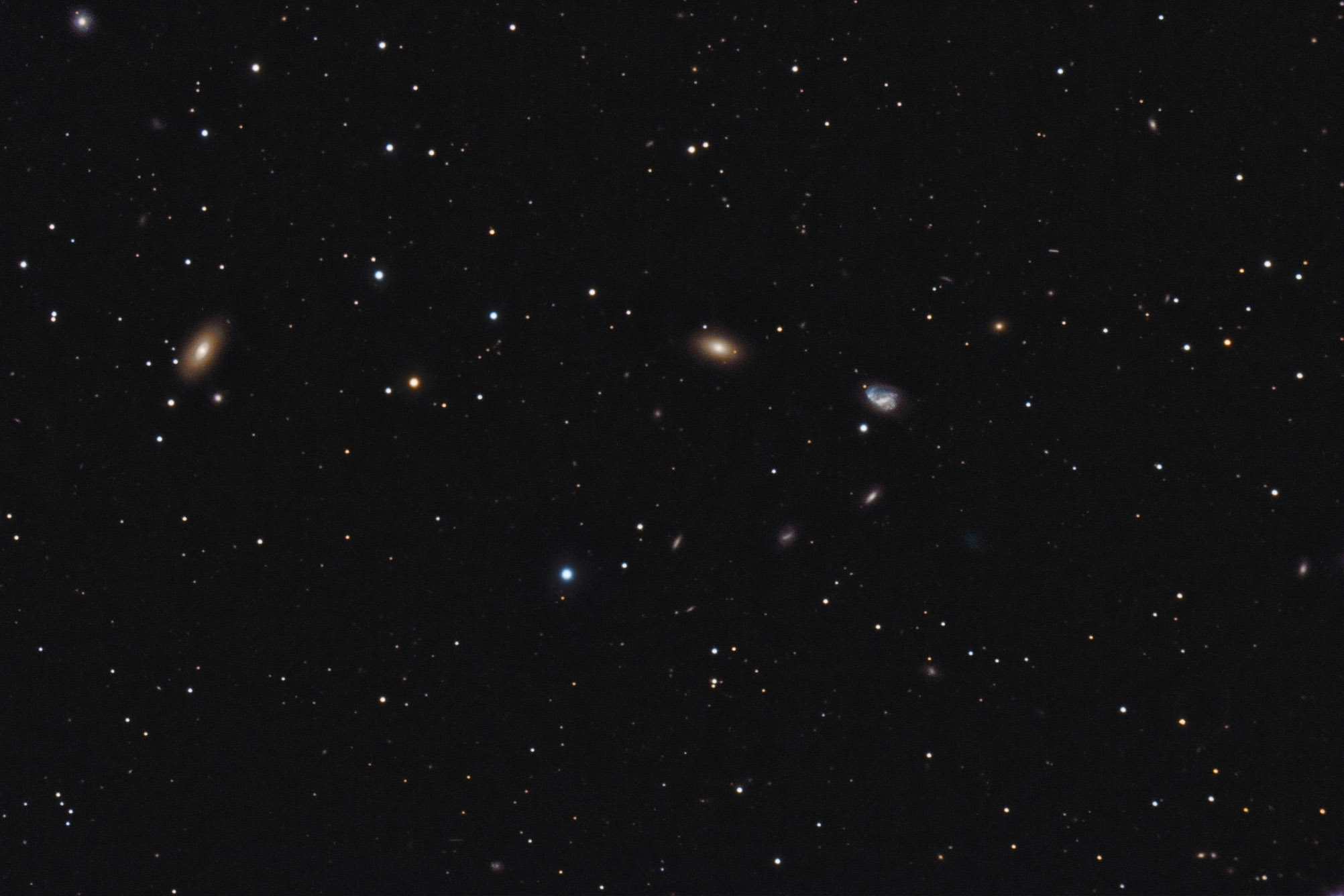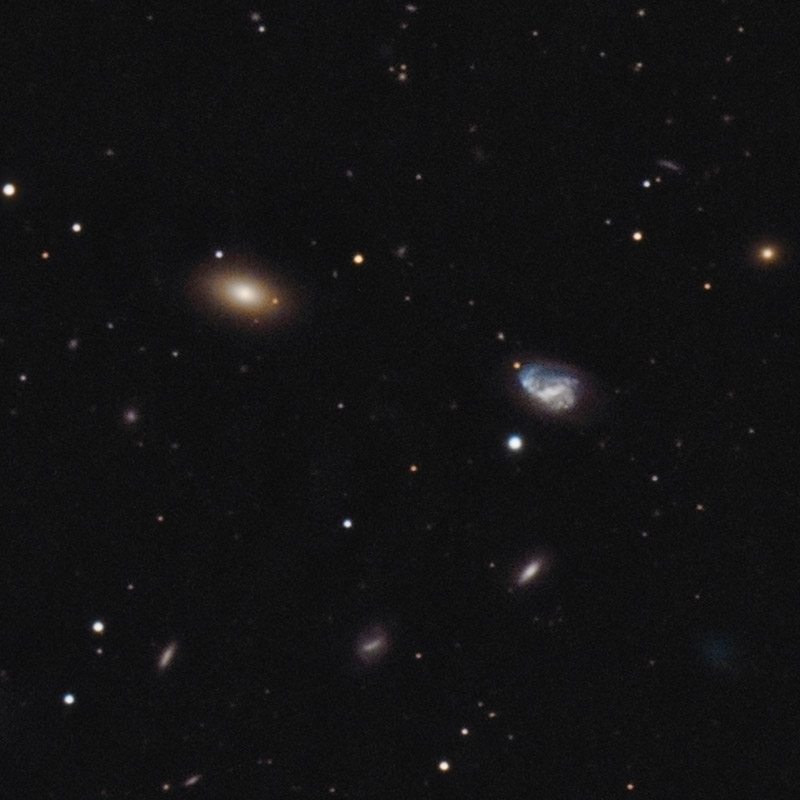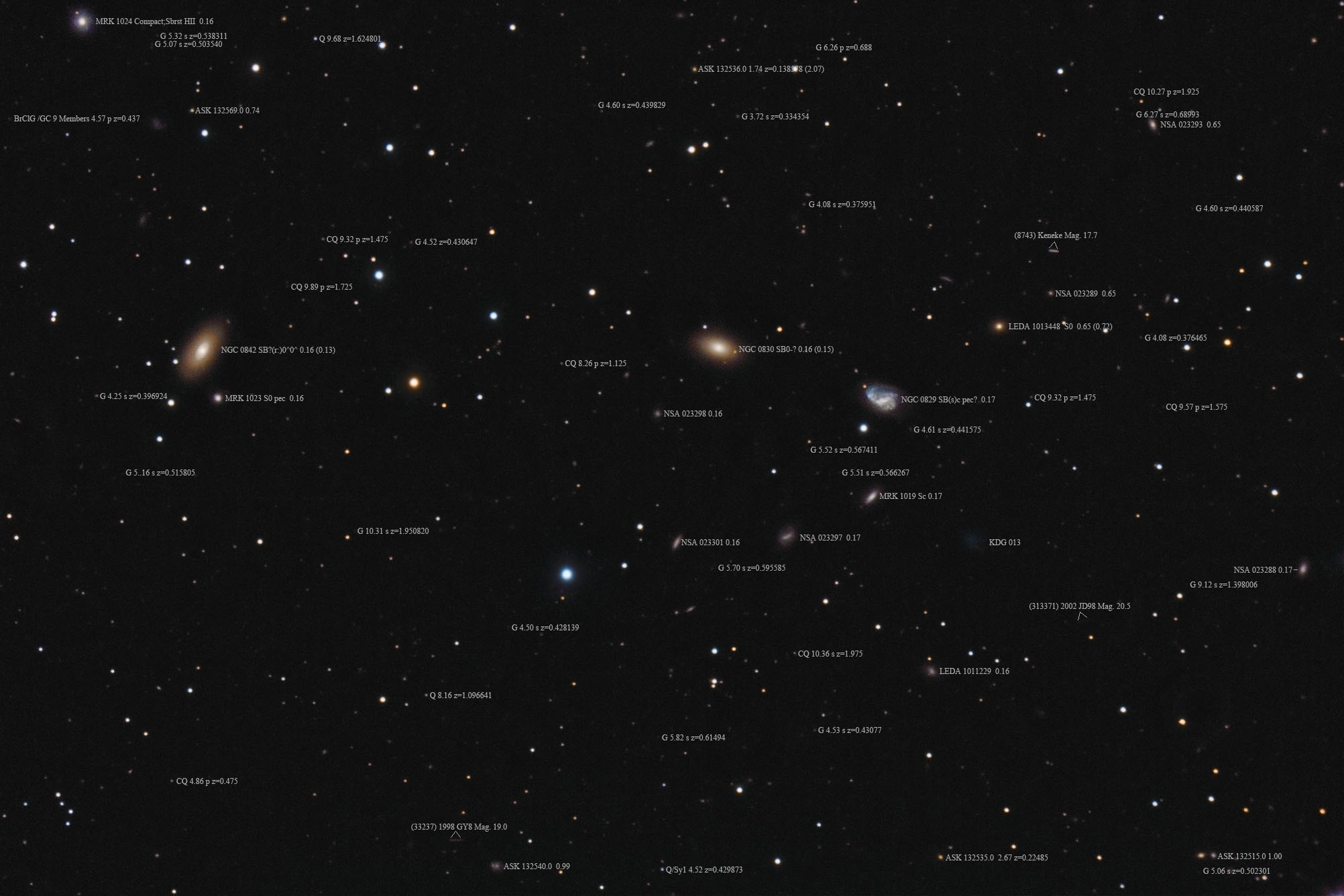Object name: NGC0829,NGC0830,NGC0842Designation(s): NGC0829,NGC0830,NGC0842, While you might think my target here was the trio of NGC galaxies it was really the galaxy group or cluster of which these are the three brightest and largest members. I never did find a name for the group with a group count that came close to how many that lie in this field at about 150 to 170 million light-years by redshift. Most are about 160 million light-years distant. 4 are Markarian (Markaryan) galaxies, including NGC 0830 in this image. Markarian galaxies have strong ultraviolet cores. Some so far into the ultraviolet it's not seen in standard RGB images. This is why NGC 830 has little blue in it. Many, including MRK 1024 are starburst galaxies. Benjamin Markarian released 1500 such galaxies over the years since 1967 through 1982. 15 more have been released so the catalog runs through MRK 1515 though a few also carry MRK 9000 numbers. Why I've not determined. If someone knows let me know and I'll add that to this text. The catalog is limited to galaxies between 17.5 and 13th magnitude.
NGC 0829 is a nice blue spiral most classify as SB(s)c pec? though I've seen Sc? as well. Visually it appears to have a bar but that can be misleading. NGC 0830 is classified as SB0-? by NED but E/S0? by Seligman. In this case, I don't see a bar but again it is usually radio data that shows the bar rather than visual data. These two were discovered by Heinrich d'Arrest on September 23, 1895. NGC 0842, however, was discovered by John Herschel on January 8, 1831. d'Arrest did mention it when logging the other two. NGC 0842 is classified by NED as SB?(r:)0^0^ and S0? by Seligman. Again the question of the bar divides these two sources. Since I see a ring around the core I wonder why Seligman didn't include it in his classification.
The field is full of much smaller galaxies that appear to be members of the group these are. I measure NGC 0829, including the very faint westward plume at 66,000 light-years, NGC 0830 at 72,000 light-years and NGC 0842 at 91,000 light-years. All are smaller than our galaxy. Markarian 1019 is 29,000 light-years across, Markarian 1023 is 14,500 light-years across and Markarian 1024 is 28,000 light-years across. It is the only really blue Markarian galaxy in this group.
Besides all the galaxies at 160 million light-years there are some very distant ones with one over 9 billion light-years distant according to NED. They didn't classify it as a quasar but unless it is a super humongous large and bright galaxy it most likely is a quasar rather than just a galaxy.
All objects listed as quasars are listed in details as candidate quasars. All but one has only a photographic redshift (p) which can be misleading. But one has been listed with a spectroscopic redshift. These are usually highly reliable which makes me rather certain it is a quasar but NED listing it only as a candidate quasar bothers me. What else at that redshift could it be?
There are two faint blue smudges in my image. KDG 013 is a listed in a dwarf galaxy catalog but has no redshift data. It is southwest of NGC 0829. I suspect it is much closer than the other galaxies in the image though the other blue smudge in the upper left corner below and right of MRK 1024 may also be close and be a contender for the closest galaxy. Neither NED nor SIMBAD lists it in any catalog so it is completely unknown. It has a faint tail to the southwest. This field is low in my sky where seeing isn't very good so detail is limited by seeing and faint detail lost due to my atmospheric conditions this low being poor for transparency.
The annotated image notes three asteroids that snuck into my frame.
14" LX200R @ f/10, L=4x10' RGB=2x10, STL-11000XM, Paramount ME Related Designation(s): | | 

